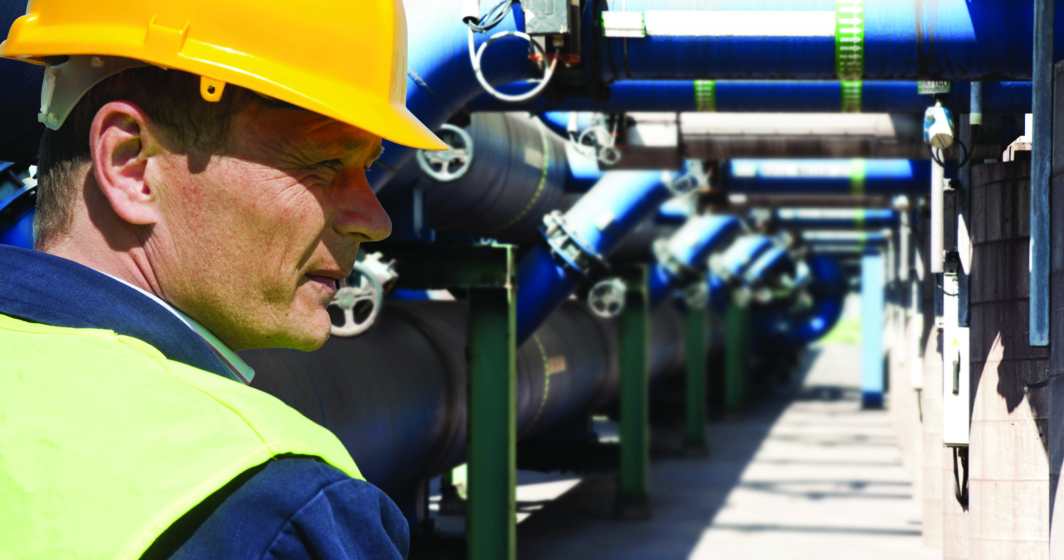In December 2023, IBISWorld released its annual ‘Plumbing Services in Australia' industry report. The report contains comprehensive data and in-depth analysis on the state of the Plumbing Services industry in Australia. Below is a summary of the key information and conclusions/recommendations contained in the report. The full report is available to be purchased from ibisworld.com

The Plumbing Services industry in Australia is poised to reach $21.9 billion with an anticipated annualised revenue growth of 2.0% over the five years through 2028-29.
This growth is underpinned by a combination of factors, including recovering conditions in the residential sector, continued demand in non-residential segments, and the ongoing demand for plumbing repairs and maintenance services across diverse markets. As the industry navigates challenges and embraces opportunities, it remains a crucial player in ensuring the effective functioning of Australia’s infrastructure and households.
Navigating challenges and opportunities
According to the report, the industry is facing challenges, with revenue expected to contract at an average annualised 0.9%, reaching $19.8 billion in 2023-24.
This includes an anticipated drop of 3.4% in the current financial year. The decline is primarily attributed to installation work on single-unit housing projects, triggered by increased mortgage interest rates as the RBA raised cash rates to contain inflationary pressures, as well as the withdrawal of subsidisation under the Federal Government’s HomeBuilder scheme.
The installation and maintenance of commercial-style plumbing fixtures and fittings in the multi-unit apartment and townhouse construction markets surged to a record peak in 2017-18. It has since fallen sharply with oversupply conditions in several markets, the withdrawal of foreign investment coupled with the fallout from the COVID-19 pandemic. Construction of multi-unit dwellings is expected to grow by 2.9% in 2023-24 and provide scope for expansion in installation work for the larger plumbing contractors.
In spite of these obstacles, many smaller plumbing contractors experienced a surge in installation work on new house construction through 2021-22, driven by historically low interest rates and the Federal HomeBuilder stimulus. Still, the recent hike in interest rates is expected to dampen house construction by 12.6% in 2023-24, threatening the industry’s overall performance.
Commercial building activity dipped during 2020-21 immediately following the outbreak of COVID-19 as property developers set aside projects in response to stay-at-home restrictions.
Despite the challenges in the residential sector, the plumbing services industry is resilient thanks to positive trends in the non-residential building and infrastructure markets. The non-residential building market has remained positive, in spite of the minor contraction of commercial building investment in 2020-21 following the COVID-19 outbreak. Anticipated growth in non-residential building construction by 2.6% during 2023-24 will provide an opportunity for some larger plumbing contractors.
Larger and specialist plumbing contractors have found solid installation and maintenance work installing commercial fixtures and fittings in offices, retail premises, hospitals, schools and industrial warehouses. This has helped to mitigate the slump in residential building.
Opportunities exist for specialist plumbing services within non-building markets, as increased government capital expenditure drives forward growth in plumbing installations, upgrades, and maintenance work related to water, sewerage, irrigation infrastructure, and water treatment projects.
Investment in non-building infrastructure construction drives specialist plumbing work on high-pressure gas and liquid piping systems for industrial applications.
There has been solid growth from piping installation on the LNG processing and coal seam gas infrastructure across northern Australia, as well as installing and maintaining water and sewerage treatment infrastructure. Heavy industry and non-building construction climbed during the COVID-19 pandemic but is anticipated to dip by 0.8% in 2023-24.
Sustaining profitability through adaptability
Over the past five years, consistent profitability in the plumbing industry has been driven by maintenance work on large-scale building and infrastructure projects.
At the same time, many smaller plumbing contractors have profited from a steady stream of emergency repair work on existing plumbing fixtures and fittings in the household market. Plumbing installation, maintenance and emergency repair work are all influenced by trends in household discretionary income and household spending capacity. Household discretionary income saw a big increase through 2020-21 in response to the injection of government funding in income support packages to counter the COVID-19 pandemic and low unemployment levels. Household discretionary income is expected to inch downwards by 0.1% in 2023-24, in response to cost of living pressures and rising interest rates. This stable revenue performance is a testament to
the diversification of installation activities across various downstream building, industrial and household markets.
The research shows, that one of the best ways for businesses to navigate the inherent volatility in the industry is by cultivating a strong reputation for delivering quality work and offering value-for-money quotes.
Furthermore, businesses need to demonstrate their adaptability by seamlessly transitioning between slower and faster-growing markets, while also staying attuned to market demands. This can be done by reading construction cycles and adjusting their work accordingly.
Positive trends and new challenges
Looking ahead, plumbing contractors are in a great position to capitalise on positive developments in installation projects within the non-residential building and apartment construction markets.
A recovery in the apartment and townhouse construction market, driven by population growth pressures, will contribute to robust expansion. This includes the installation of commercial-style fixtures, fittings, and comprehensive water supply and drainage systems for large-scale buildings. The potential relief in interest rates, coupled with population pressures, may also support a modest recovery in the single-unit house construction market, driving demand for domestic installation services and civil plumbing on residential subdivisions, including bathroom, kitchen and laundry fixtures and fittings, hot water systems, dishwashers, gas heaters and ovens. While smaller plumbing contractors will continue to focus on revenue from maintenance and repairs in residential dwellings, they may encounter heightened competition from contractors operating under franchise arrangements.
These favourable trends are expected to enable some larger plumbing contractors to experience widened profit margins on new installation work. However, challenges with the Victorian Government’s ban on natural gas connections in new residential developments will have an impact. Despite these obstacles, sustained spending on plumbing repairs and maintenance services across household, commercial, and industrial sectors is projected to maintain favourable conditions for most contractors.
Lifecycle and technology
The Plumbing Services industry exhibits slower growth than Australia’s GDP, primarily propelled by construction project installations and ongoing maintenance and repair services. While gradual changes in technology and a tighter regulatory environment offer potential for new products and markets, the inherently labour intensive nature of plumbing services limits substantial
transformation. The industry’s fragmented structure also hinders consolidation, despite the emergence of new franchise groups.
Technological advancements in the delivery of plumbing services mainly comes from building management software for scheduling, workflows, project estimates, and client invoicing, alongside innovations like nondestructive digging equipment and easily assembled plumbing fixtures to enhance labour productivity.
Expanding and contracting products and services
Water plumbing services have maintained a steady share of industry revenue, balancing the decline in residential installation work with the rise in water infrastructure projects to address population growth and water security.
Modest growth in sanitary plumbing services was supported by public sector funding for sewage facilities and non-residential building expansion. Civil work on sewerage connections for residential subdivisions previously stimulated the industry before the recent downturn in new housing construction.
Contractors found opportunities for plumbing installation work from the growth in non-residential building construction, installing and maintaining complex water plumbing systems for offices, universities and healthcare buildings. Ongoing maintenance and repair activity also provides a stable revenue source for many commercial plumbing contractors and facilities management companies.
Gas fitting services fell sharply, with the industry continuing to service existing gas ovens, cooktops, heaters and hot water systems. Revenue from burst pipe detection and repair services to gas mains will remain a constant source of revenue from the household, commercial and industrial markets.
Mechanical plumbing services in the non-residential building market expanded through 2023-24, including installing and servicing large-scale climate control and ventilation systems for commercial and industrial buildings. Maintenance activity in this market tends to be seasonal and climbs during the cooler months.
Plumbing contractors who adopt new technology in equipment and training including using water jetters, rodder machines and drum machines to clear drains will have a competitive advantage. Innovation in plumbing software packages can improve efficiency, while technological advancements in capital equipment can innovate the delivery of plumbing services.
Reputation paramount in a competitive landscape
The primary battleground for contractors lies in establishing a reputation for quality, where plumbing professionals set themselves apart through the excellence of their work, punctuality, cleanliness, and positive customer referrals. By aligning themselves with trusted networks and emphasising service excellence, these
contractors not only enhance their credibility but also open doors to a broader customer base, reinforcing their position in the industry.
Editor’s note: Since this report was published, further bans on gas appliances have been foreshadowed, and are likely to impact the plumbing industry.
The full impact of this will not be clear with further lobbying from Master Plumbers due through 2024.
Share this Article






